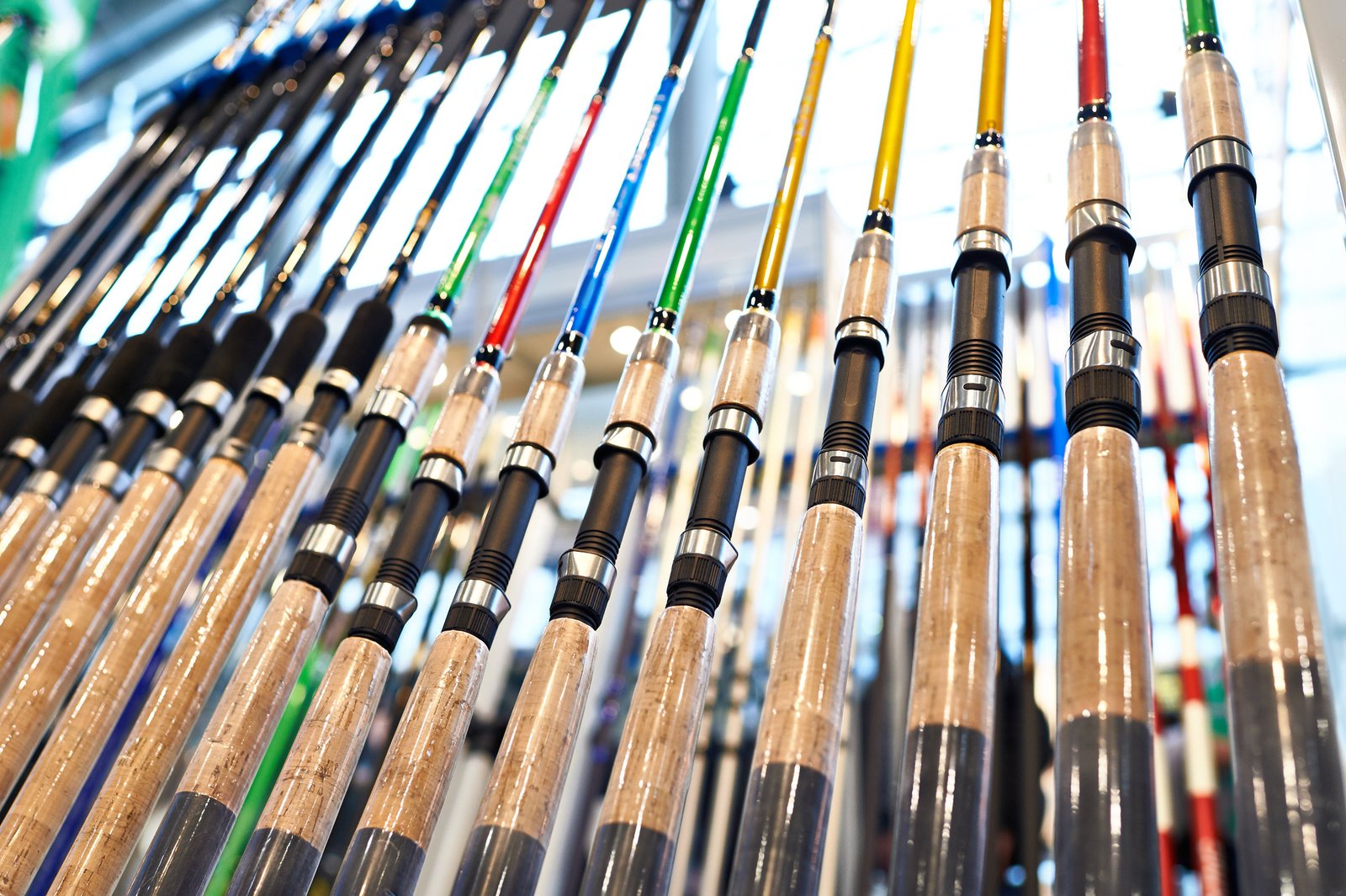So, you’ve mastered your first fishing reel, but now you’re staring at a wall of fishing rods, and the labels read like a secret code: “Medium-Heavy,” “Fast Action,” “IM8 Carbon.” It’s confusing. What is a good all-around fishing rod for a beginner? Choosing the right one can feel more complicated than catching the fish itself. But it doesn’t have to be. This guide is here to decode the jargon. We’ll break down Power, Action, and Materials into simple terms, so you can select your next rod with total confidence. Let’s find the perfect rod to elevate your fishing game. For a look at modern, high-performance options, you can explore our collection of carbon fiber fishing rods.
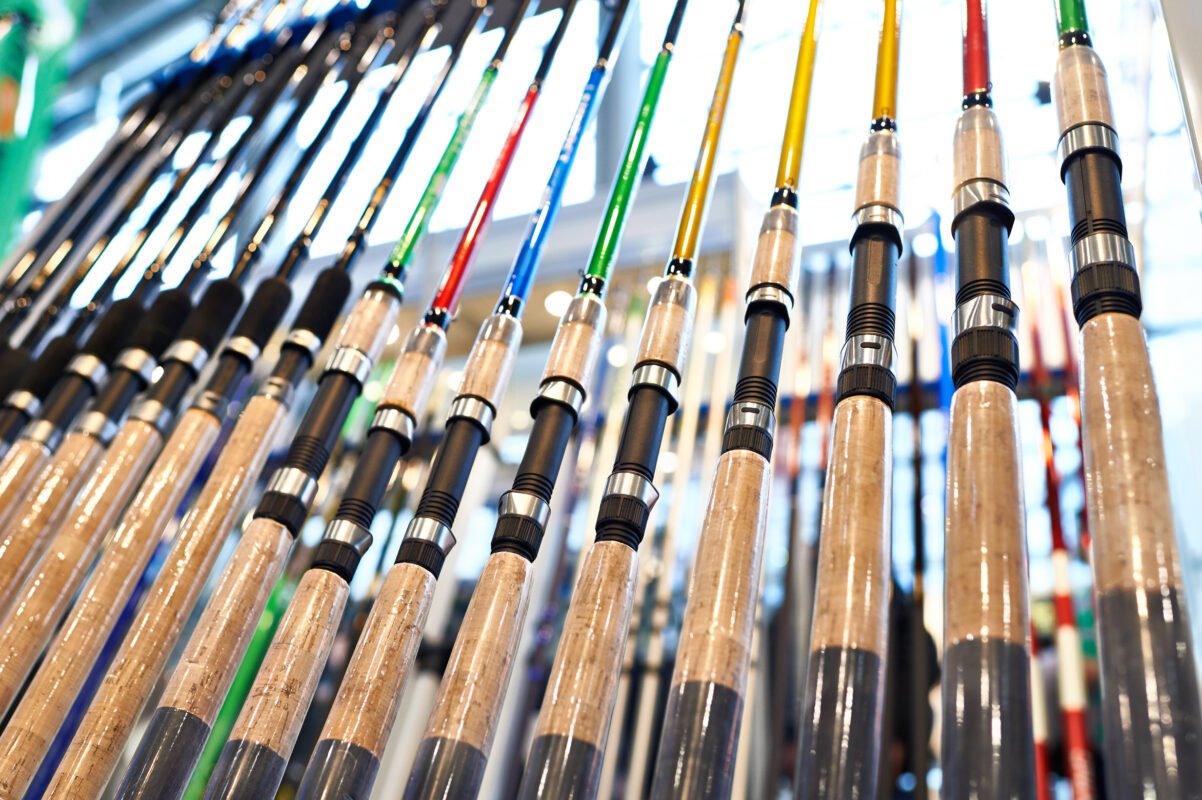
Anatomy of a Fishing Rod: The Key Parts Explained
Before we dive into the technical specs, let’s get familiar with the basic components. Understanding these fishing rod parts will help you understand how they all work together.
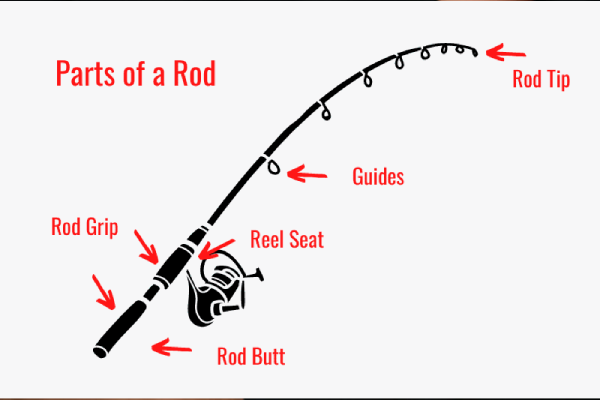
The Blank
The blank is the rod itself—the long, tapered tube that forms its backbone. The material it’s made from (which we’ll cover later) is the single most important factor in its performance.
The Guides
These are the small rings that run along the length of the rod. Their job is to guide the fishing line from the reel to the tip, minimizing friction and ensuring a smooth, long cast. More guides often mean better stress distribution when fighting a fish.
The Reel Seat & Handle
The reel seat is where you attach your fishing reel to the rod. A secure reel seat is crucial. The handle, usually made of cork or EVA foam, is your connection point. A comfortable handle makes a long day of casting much more enjoyable.
Understanding Rod Power: Your Rod’s Lifting Strength
What is fishing rod power? Simply put, Power is the amount of force it takes to bend the rod. It’s essentially the rod’s lifting strength and is usually printed right on the blank.
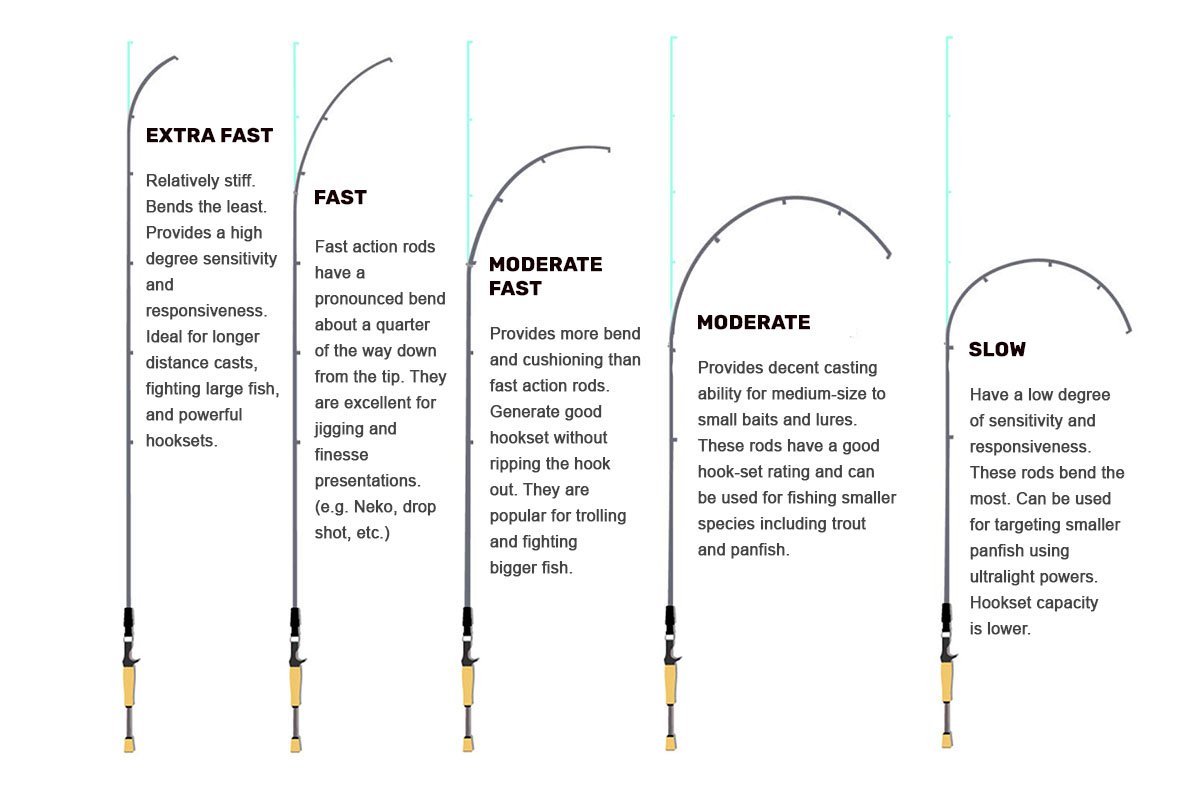
From Ultra Light to Heavy: A Power Rating Chart
Power ratings tell you what kind of fishing the rod is designed for. Here’s a quick breakdown:
- Ultra Light / Light: For small fish like trout and panfish. Bends very easily.
- Medium-Light / Medium: The perfect all-around choice for bass, walleye, and larger trout.
- Medium-Heavy / Heavy: For big fish, thick cover, and heavy lures. It takes a lot of force to bend these rods.
How to Match Power to Your Lure Weight & Target Fish
Every rod has a recommended lure weight range printed on it (e.g., 1/4 – 3/4 oz). Using a lure that’s too heavy for a light power rod can damage it. Using one that’s too light for a heavy power rod will result in poor casting distance. Matching the power to your lure and target fish is the key to a balanced setup.
Fishing Rod Action Explained: How Your Rod Bends
What is fishing rod action? Action describes where along the blank the rod bends when you put pressure on the tip. It controls how fast the rod tip returns to a straight position.
Fast Action vs. Moderate vs. Slow Action
- Fast Action: Only the top third (the tip) of the rod bends. It snaps back very quickly.
- Moderate Action: The top half of the rod bends. It has a more parabolic curve.
- Slow Action: The rod bends almost all the way down to the handle.
When to Choose Fast Action (Sensitivity) vs. Slow Action (Casting)
There’s a trade-off. Fast Action rods are extremely sensitive, allowing you to feel the slightest bites. They are great for techniques that require a quick, powerful hookset. Slow Action rods, on the other hand, are much better for casting. They “load up” energy during the backcast and release it like a catapult, which is great for launching lighter lures. For a beginner, a Fast or Moderate-Fast action rod offers the best blend of sensitivity and casting performance.
Rod Materials Matter: Why a Carbon Fiber Rod Wins
The material of the rod blank is everything. While older rods were made of fiberglass, modern technology has given us a far superior option.
The Big 3 Benefits: Sensitivity, Weight, and Strength
A carbon fiber fishing rod is the modern standard for a reason.
- Sensitivity: Carbon fiber is incredibly stiff and transmits vibrations directly to your hand. You can feel a fish breathing on your lure.
- Weight: It’s exceptionally light, reducing fatigue and making it easier to fish all day.
- Strength: High-quality carbon fiber offers an amazing strength-to-weight ratio, giving you the power to handle big fish on a lightweight rod.
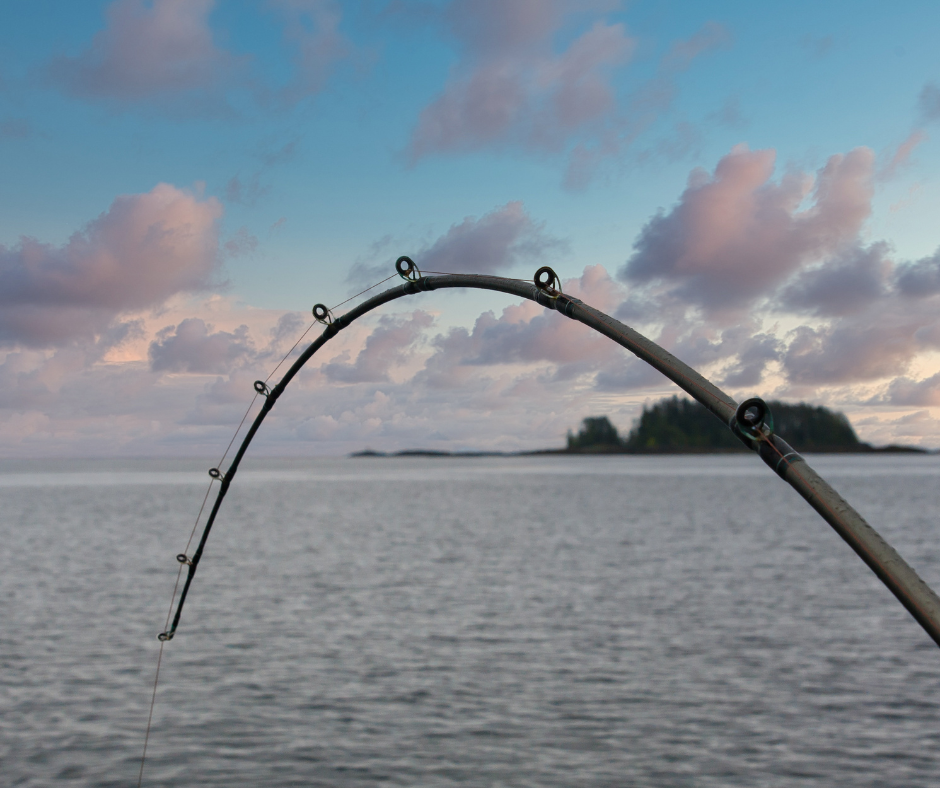
What About Fiberglass and Composite Rods?
Fiberglass rods are very durable and have a slow, forgiving action, but they are heavy and lack sensitivity. They are still used for specific techniques, like fishing with crankbaits. Composite rods blend carbon and fiberglass to try and get the best of both worlds, but a full carbon fiber rod is the top choice for performance. You can truly feel the difference with a lightweight rod.
How to Choose the Perfect Beginner Fishing Rod
You’ve learned the theory, so let’s put it into practice. How do you choose the perfect beginner fishing rod?
A Simple Checklist for Your First Rod Purchase
- Match the Rod to Your Reel: If you have a spinning reel, you need a spinning rod (the reel hangs underneath).
- Choose Your Power: For all-around freshwater fishing, a Medium power rod is the most versatile.
- Choose Your Action: A Fast or Moderate-Fast action gives you the best mix of sensitivity and casting ability.
- Choose Your Material: Invest in a carbon fiber rod. The performance difference is something you will feel on your very first cast.
Our Top Recommendation: A Medium Power, Fast Action Spinning Rod
This combination is the Swiss Army knife of fishing rods. It’s sensitive enough to feel subtle bites, powerful enough to handle a surprise lunker, and versatile enough for a huge range of lures and techniques. It’s the perfect platform to build your skills on.
Your High-Performance Rod is Ready
Decoding fishing rods isn’t about memorizing jargon; it’s about understanding how each component helps you catch more fish. By grasping the concepts of Power, Action, and Material, you’re no longer just buying a stick—you’re choosing a high-performance tool. You are now equipped with the knowledge to select a rod that will feel like an extension of your arm.
Ready to feel the difference a modern rod can make? Explore our collection of lightweight, high-performance carbon fiber rods and find the perfect match for your angling adventures.
FAQ: Common Questions About Fishing Rods
Is a more expensive carbon fiber rod really better? Yes, to a point. More expensive rods use higher-modulus carbon fiber, which is lighter and even more sensitive. However, for a beginner or intermediate angler, the leap in performance from fiberglass to a quality entry-level carbon fiber rod is massive. You can get an incredible, high-performance rod without needing to buy the most expensive model on the rack. The key is value, which is exactly what our affordable fishing rods deliver.
What’s the main difference between a spinning rod and a casting rod? The primary difference is the reel placement and the guides. A spinning rod is designed for a spinning reel to hang underneath, and it has large guides near the handle to gather the line coming off the fixed spool. A casting rod is for a baitcasting reel that sits on top, and it has a trigger grip and smaller guides. They are not interchangeable.
How long should my fishing rod be? For a beginner, a rod between 6’6″ and 7′ is a fantastic all-purpose length. Shorter rods offer more accuracy for casting in tight spaces, while longer rods can cast farther. A 6’6″ rod provides a great balance of both.

